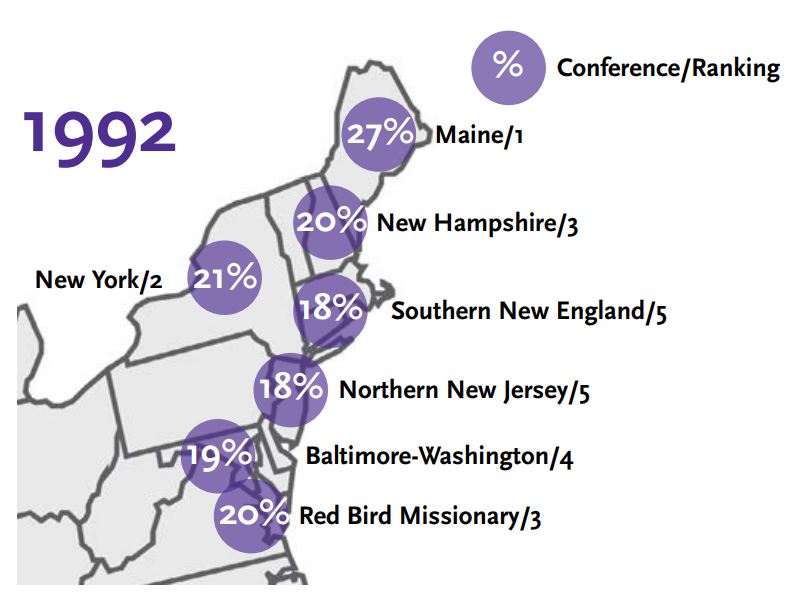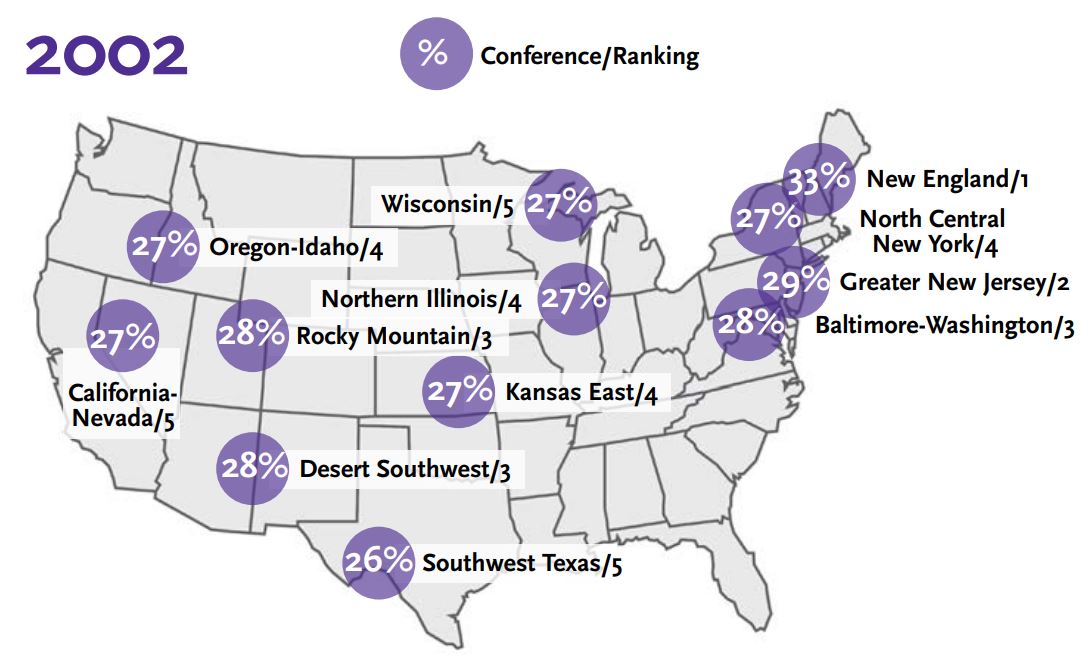Craig This, formerly with the General Council on Ministries, is a “numbers guy.” His research for the denomination has helped many groups see where they are headed by looking at where they have been. One of the numbers Craig has been tracking relates to the ministry of the General Commission on the Status and Role of Women, and the “where we’re headed” is looking better all the time.
According to Craig, the percentage of clergywomen in The United Methodist Church increased from 11% in 1992 to 19% in 2002, the most recent year for which data are available. Thirty-four conferences had 19% or more clergywomen in 2002. This is good news as we move toward a more representative future.
Top Five* Annual conferences
by Percentage of Clergywomen, 1992 and 2002


If the “Big 10” collegiate sports conference comprises 11 universities, the “top five” annual conferences with the highest percentage of clergywomen can be made up of 12 annual conferences. Annual conferences with a membership of 26% clergywomen or more make up the “top five.” New England has the largest percentage of clergywomen with 33%, followed by Greater New Jersey with 29%. This contrasts favorably with 1992 when the “top five” were actually only 7 annual conferences and 16% was the smallest percentage in fifth position. In 1992, only the Maine annual conference had 27% clergywomen while, in 2002, 12 annual conferences had 26% or more clergywomen.
Comparing “clergy membership”
The definition of “clergy membership” as a statistical category has changed from 1992 to 2002. In 1992, clergy membership, as collected by the General Council on Finance and Administration, included elders in full connection, probationary members, associate members, and full-time local pastors. By 2002, clergy membership included elders in full connection, deacons in full connection, probationary members, associate members, full-time local pastors, and part-time local pastors. The change in status accounts for the significant increase in the number of clergywomen.
Elders in full connection

The percentage of female elders in full connection for the denomination has gone from 8% in 1992 to 15% in 2002. Like the percentage of clergywomen, this increase has not been across the board. The top five annual conferences in terms of the percentage of women who are elders in full connection are very similar to those of the top five annual conferences for clergywomen as a whole. Interestingly, the top five annual conferences in 1992 would not get into the top five in 2002, where the cut-off is 23%. This shows the gains and improvement made by women clergy in The United Methodist Church.
The bottom line
Numbers guys like the “bottom line,” and Craig is no exception. The data show remarkable progress by women clergy from 1992 to 2002, in terms of growth in percentage of numbers. What remains to be examined is the impact of this growth on women in leadership positions across the denomination in being elected bishop, serving as district superintendent, serving on general agencies, being elected to general conference, and receiving appointments to the “big steeple” churches
*Annual conferences with the same percentage share a ranking.Source of data: Clergy Membership Tables 1992 and 2002. General Council on Finance and Administration, Evanston, Illinois.
